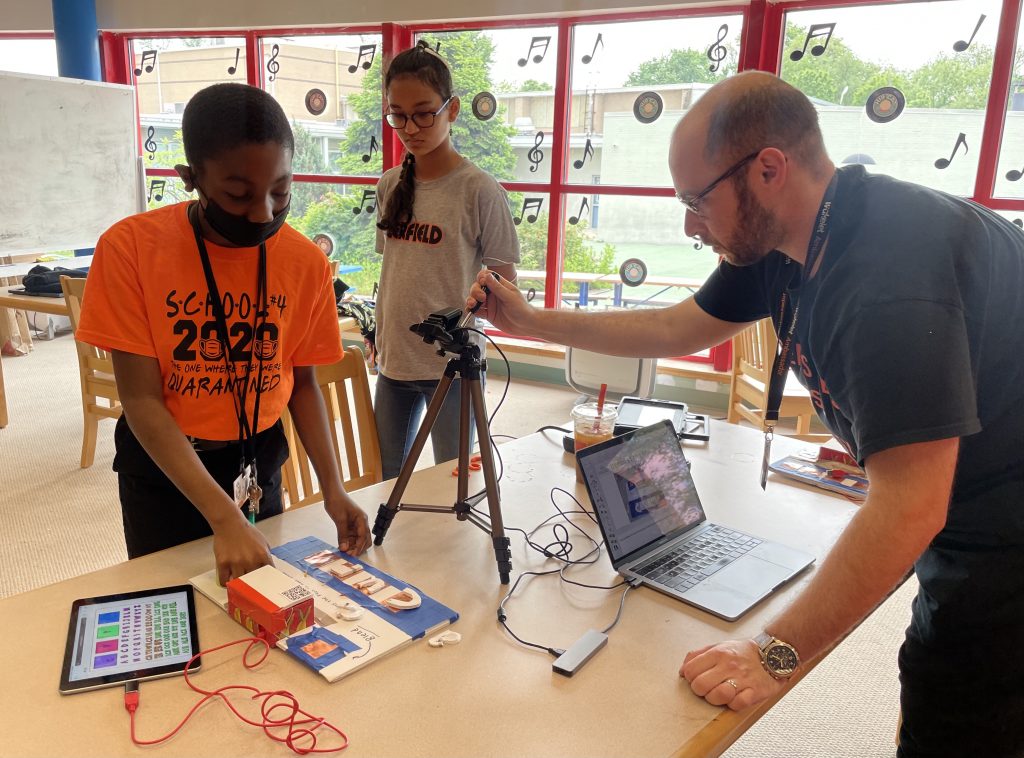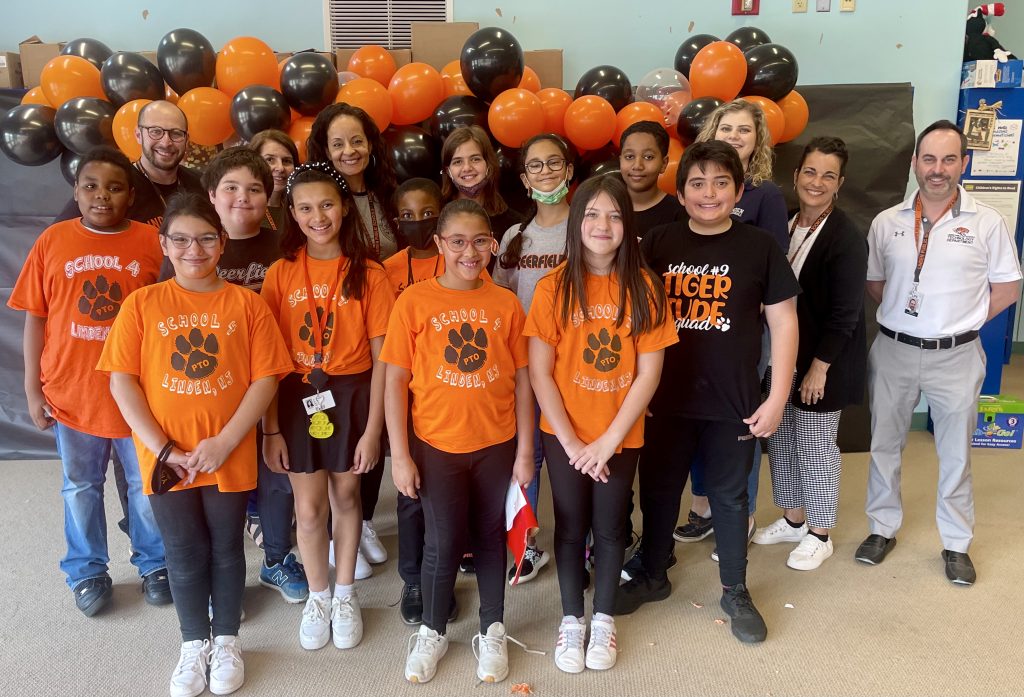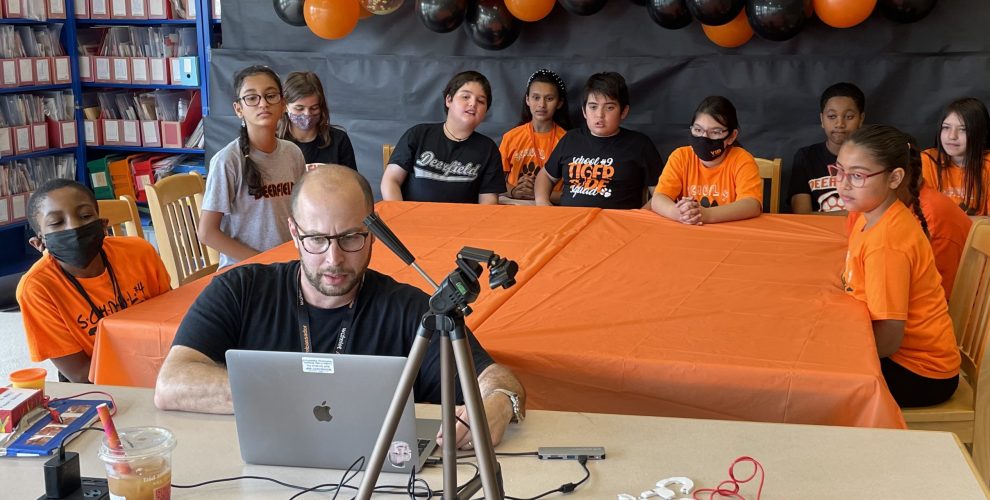A team of technology students from Schools No. 4 and No. 9 won three awards in the finals of the statewide STEAM Tank Challenge, drawing high praise from a panel of judges for their Read-O-Matic invention.
The students were honored for Arts and Creativity; J.E.D.I. (Justice, Equity, Diversity, Inclusion); and Social-Emotional Learning. Linden’s team was one of more than 400 to enter the competition and was one of just 40 to make the finals after impressing the judges with their first-round presentation.
“The students did outstandingly,” said technology teacher Mitch Gorbunoff, who is guiding the students. “They spent the time between our last interview and this one conducting research, refining their prototype, and preparing for this interview, and they excelled in all areas. They became the experts and shared that expertise with highly qualified judges.”

The Linden team is made up of the Student Vanguard technology club at School No. 4 and the fifth-grade Gifted & Talented students at School No. 9. They are Jayden Countrymen, Izabelle Rivera, Eva Bien, Heidy Yanes, Izrum Efobi, and Andrea Rivas from School No. 4, and Philipe Pajishvili, Marc Prieto, Rasha Bashir, Mohammed Shawir, and Nina Szczurowski from School No. 9.
The STEAM Tank Challenge encourages students and teachers to work collaboratively in science, technology, engineering, art, and math (STEAM). It also supports the development of critical thinking and problem-solving skills. The program was created by the New Jersey School Boards Association (NJSBA) and is sponsored by the U.S. Army.
“I believe the students’ background knowledge and ability to clearly explain how the Read-o-Matic works impressed the judges,” Gorbunoff said. “Several of the judges had a personal connection to the struggle of learning to read, so this invention resonated with them.”

The Read-O-Matic is designed to help students learn letter sounds then blend them together. The students demonstrated the invention on May 20 virtually from the School No. 4 reading room to a panel of judges made up of educators from around the state. They took turns showing different features of the invention and explaining stages of their research and development.
Gorbunoff and the students were supported at the presentation by School No. 4 Principal Dr. Suzanne Olivero, School No. 9 Acting Principal Antoinette Modrak, Supervisor of Instructional Technology Joseph Scaldino, School No. 4 Vice Principal Rosalia Kolibas, and School No. 9 Gifted & Talented teacher Stephanie Webb.

Judges told the students that with more work, they could patent the Read-O-Matic to allow it to be used in classrooms to help young students learn how to read, or even for adults learning a new language.
“The students are super excited to see what happens next,” Gorbunoff said. “Next year our focus will be to distribute the Read-o-Matic to different classrooms across the district to gather data on the effectiveness of their invention, refining the programming and the design, and working with an attorney to secure a provisional patent on the idea.”
The Read-o-Matic uses a device called a Makey Makey, which allows any conductive material to be turned into a keystroke. Students use Scratch, a programming website, to code specific sounds each time certain keys are pressed. Students form letters out of Play-Doh then place these letters on metal squares on the board. When the student presses on their Play-Doh letter, they hear the correct letter sound.
“You can see the growth in these students that this process helped facilitate,” Gorbunoff said. “The future of the Read-O-Matic is bright to be sure, but it’s these students and their potential that shines the brightest.”



